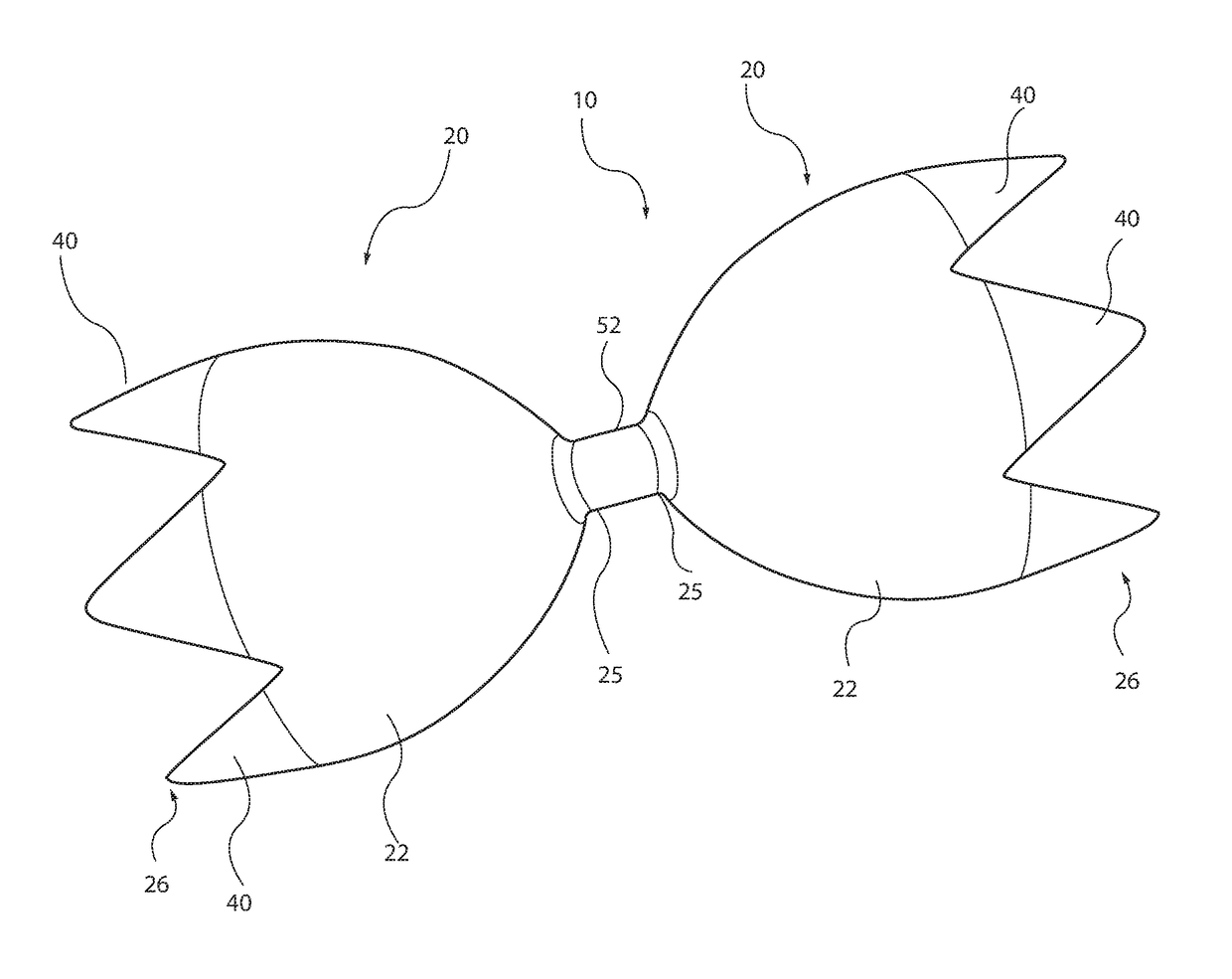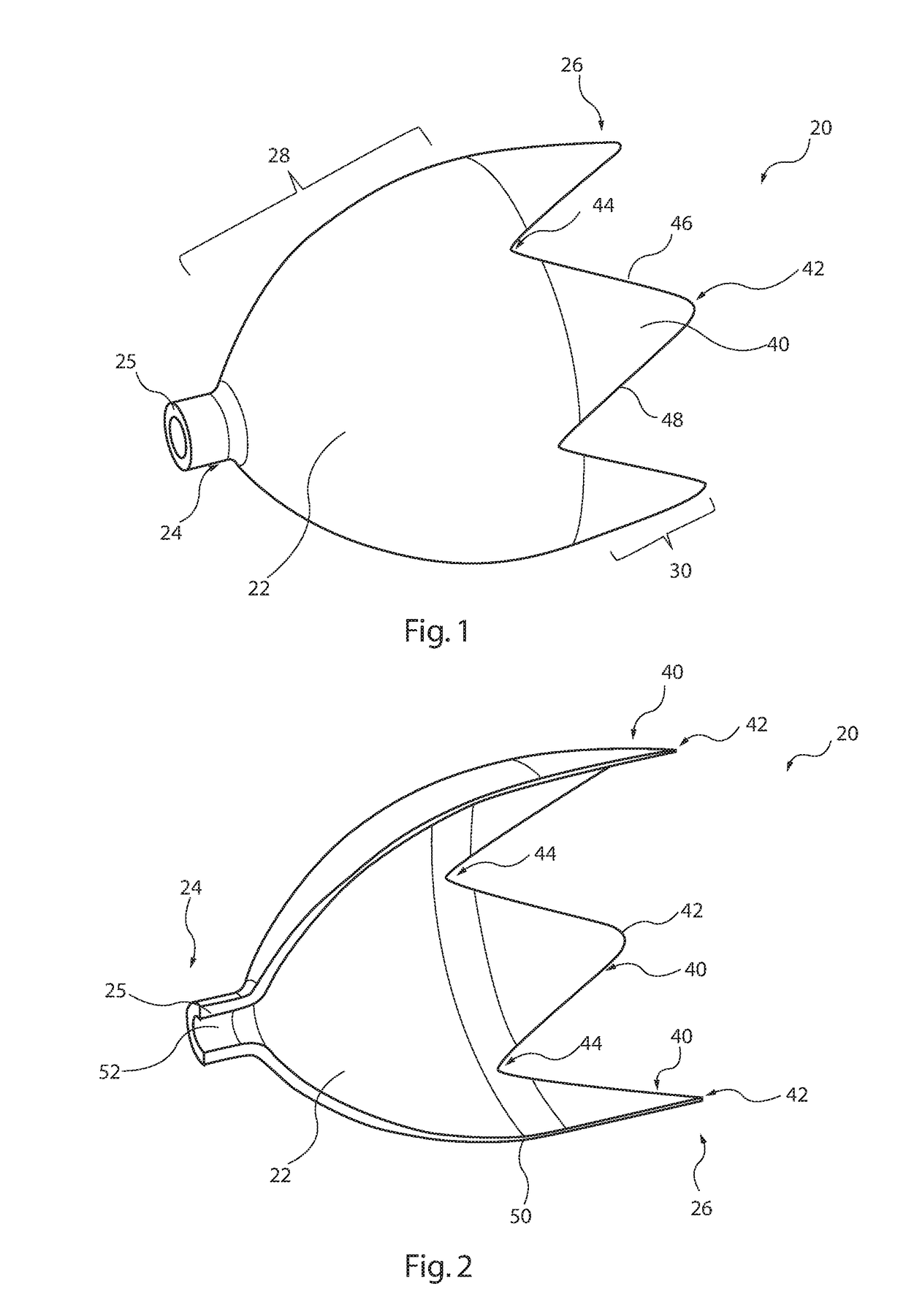Cone expanding collapsible medical device
a medical device and collapsible technology, applied in the field of collapsible medical devices, can solve problems such as the loss of the seal to the vessel wall, and achieve the effect of reducing the thickness of the device and optimising its compressibility
- Summary
- Abstract
- Description
- Claims
- Application Information
AI Technical Summary
Benefits of technology
Problems solved by technology
Method used
Image
Examples
Embodiment Construction
[0031]The skilled person will appreciate that the drawings are schematic only and simplified in order to depict the principal elements of the devices shown. The elements shown in the drawings are also not to scale. Suitable sizing and scaling will be readily determinable by the skilled person having regard to common knowledge in the art.
[0032]The preferred embodiments described below and shown in the drawings are related to an occluder device for occluding a body vessel. The teachings herein are not, however, limited to occlusion devices as they could equally be applied to other devices. For example, the conical members could be made porous or with apertures allowing the passage of blood plasma but which are small enough to trap debris such as thrombi formations, thereby to act as filtering elements. The teachings herein are therefore applicable to a variety of implantable medical devices.
[0033]Referring first to FIG. 1, this shows in schematic form an embodiment of conical member 2...
PUM
 Login to View More
Login to View More Abstract
Description
Claims
Application Information
 Login to View More
Login to View More - R&D
- Intellectual Property
- Life Sciences
- Materials
- Tech Scout
- Unparalleled Data Quality
- Higher Quality Content
- 60% Fewer Hallucinations
Browse by: Latest US Patents, China's latest patents, Technical Efficacy Thesaurus, Application Domain, Technology Topic, Popular Technical Reports.
© 2025 PatSnap. All rights reserved.Legal|Privacy policy|Modern Slavery Act Transparency Statement|Sitemap|About US| Contact US: help@patsnap.com



